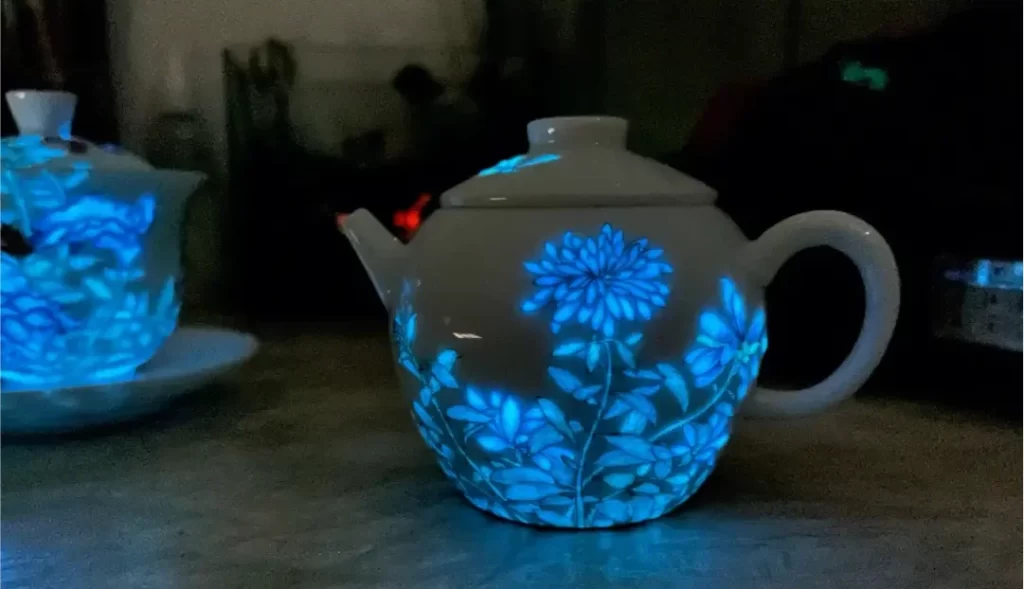Luminous powder for ceramic can emit lasting fluorescence in the dark. It has two key components: luminous powder and material base.
We can prepare luminous powder as follows:
- Choosing suitable luminous material:
The luminous effect of the said powder depends on luminous material, which is now commonly fluorescent powder, phosphor powder, or some other type. We need to select the luminous material based on the desired luminous color and brightness. - Preparing a powder base:
Powder base is the carrier of luminous material. It affects the texture and performance of luminous pigment powder in use. Ceramic or glass is a common base because of their excellent heat resistance and stability. - Mixing the luminous material and the powder base:
Mix an appropriate amount of luminous material and powder base evenly, usually with efficient stirring equipment, to ensure that the luminous particles are evenly dispersed in the base. We can also add other supporting materials such as tackifier or stabilizer at this step. - Drying and sintering:
Dry the mixture to remove excess moisture. Then, put it in a high-temperature sintering furnace for tight bonding between the luminous material and the base. Set the sintering temperature and time according to material characteristics and relevant requirements. - Grinding and screening:
Grind the sintered luminous powder to make its particles finer and more uniform. Then, screen it to remove oversized or irregular particles to ensure the consistency and quality of product. - Packaging and storage:
Pack the screened luminous powder for ceramic, and properly control the humidity and oxygen contact to prevent material loss or quality drop. Store it in a dry and cool environment to avoid moisture and direct sunlight.

Please note to ensure strict process conditions while making the said powder to avoid contamination by impurities or over-sintering of material. We can also improve and optimize the process as needed to achieve better product performance and luminous effect.
Continue Reading
How to choose the right glow in the dark pigment?
How to select glow in the dark pigment powder for your product?
Glow in the dark powder vs Fluorescent powder, What is the difference?



